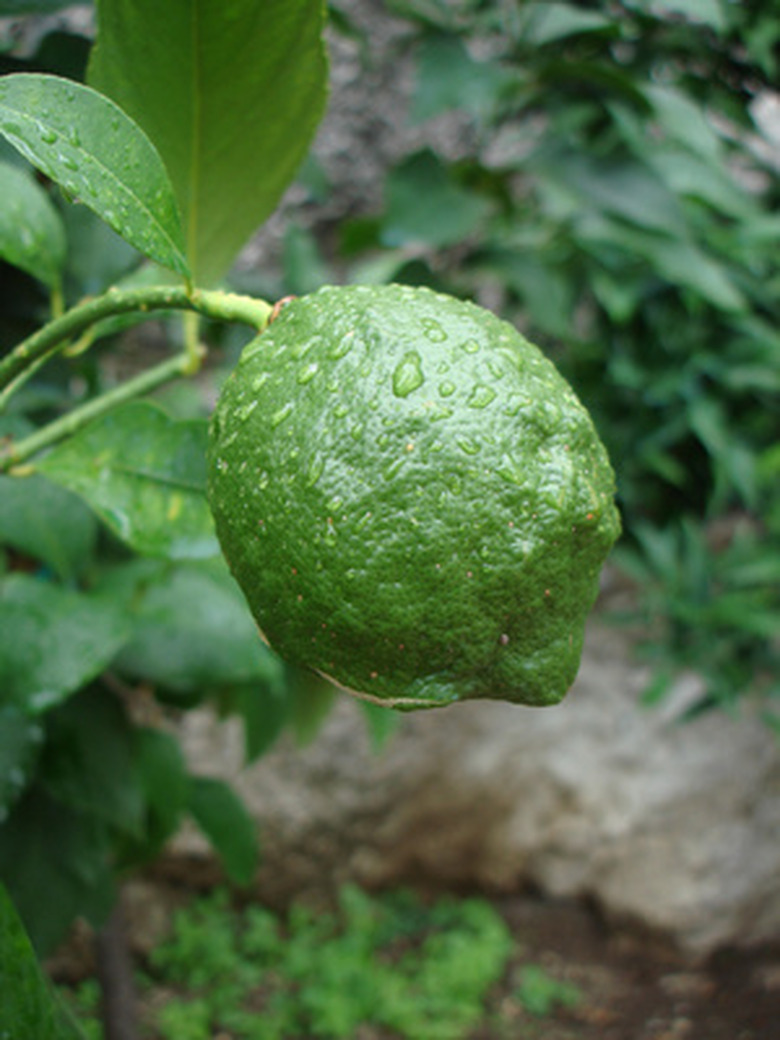How To Care For A Persian Lime Tree
Things Needed
- Large planting container
- Low-PH soil
- Sharp pruning shears
- Spray bottle
- Dish soap
Persian lime trees have an unknown origin, but they are believed to be a hybrid that originated from seeds of fruit trees imported from Tahiti. Also known as Tahiti lime and Bearss lime trees, they first appeared in a home planting in California around 1875. Because of their small size, they make an excellent addition to gardens and patios. Easy to grow with the proper conditions, Persian lime trees are a popular pick among gardeners across the United States.
Step 1
Determine if the lime tree will be grown indoors or outdoors. If you choose to grow it outdoors and live in an area where the temperature will fall below 40 degrees, the lime tree will need to be planted in a large container in low PH-soil and taken indoors until the temperature rises again. Cold temperatures will not allow the lime tree to grow properly.
- Persian lime trees have an unknown origin, but they are believed to be a hybrid that originated from seeds of fruit trees imported from Tahiti.
Step 2
Place the lime tree in an area that receives full sun for approximately eight to 10 hours throughout the day. Because it is fruit bearing, the Persian lime tree requires full sun to produce the important nutrients it needs to grow. If you are required to bring the tree indoors due to the temperature (below 40 degrees), mimic the outdoor habits by ensuring the tree gets full sun for most of the day.
Step 3
Prune away any brown, dead or diseased limbs. These limbs can steal nutrients away from the healthier areas of the tree, and if the limbs are diseased, they'll spread the disease around the tree. When pruning, cut the limb(s) you intend to remove where they connect to the main trunk of the tree. Use sharp pruning shears to complete this process. Dull pruning shears will pinch the limb off, and not make a smooth cut.
- Place the lime tree in an area that receives full sun for approximately eight to 10 hours throughout the day.
- When pruning, cut the limb(s) you intend to remove where they connect to the main trunk of the tree.
Step 4
Water the Persian lime tree often depending on the weather conditions in your area. The soil should be moist to the touch at all times, but not soggy. Soggy soil can increase chances of fungus growth. If you live in an area that has low humidity, mist the tree with a spray bottle to keep the tree's moisture content high.
Step 5
Treat pest such as aphids and ants with a mild dish detergent and water mixture. Simply add a few drops of dish detergent to a spray bottle of tap water and spray the plant after removing by hand any visible insects.
